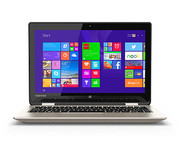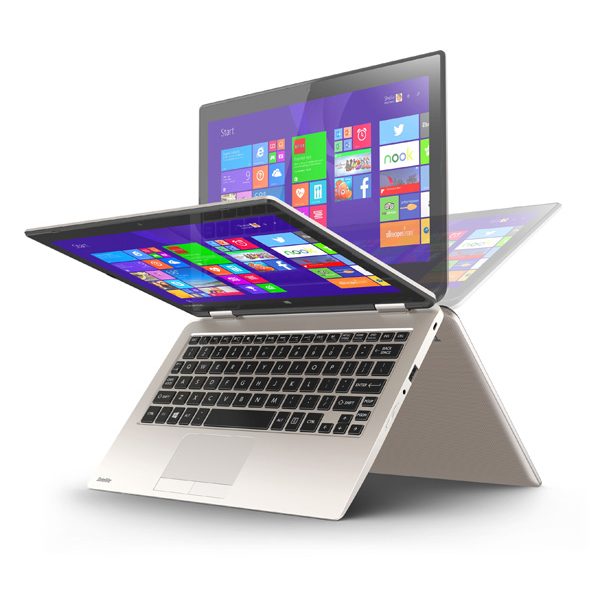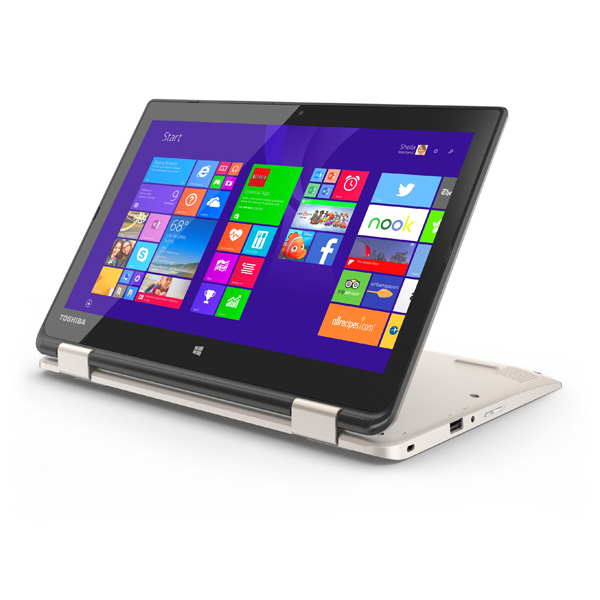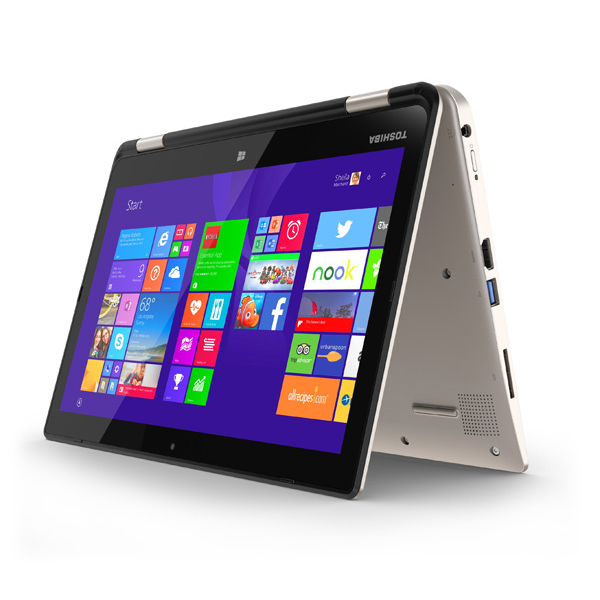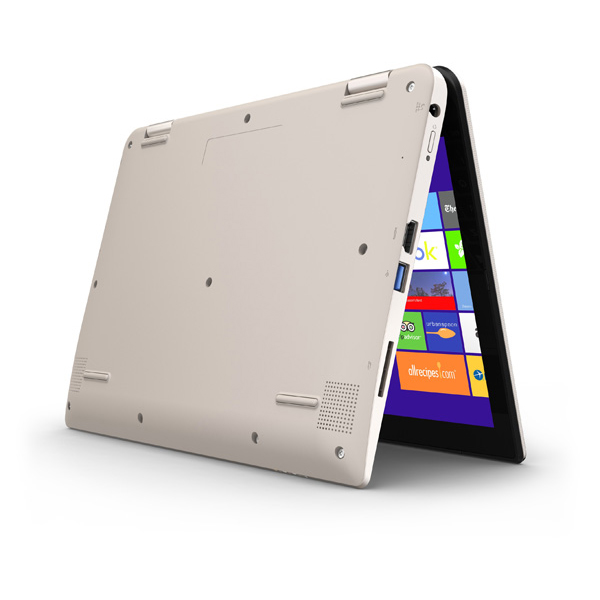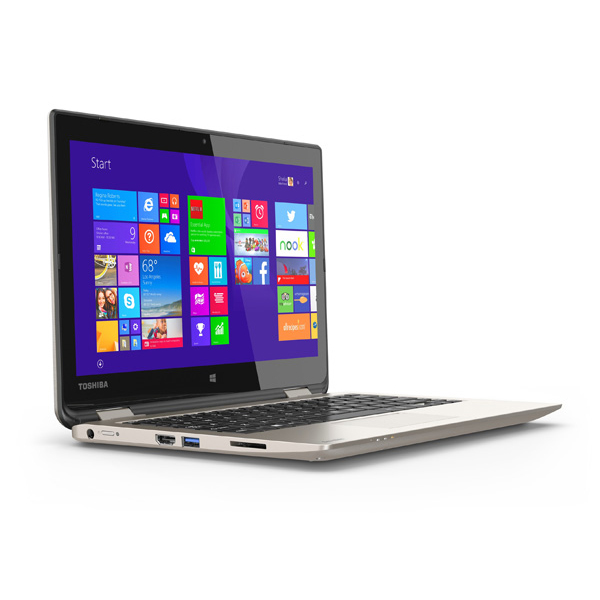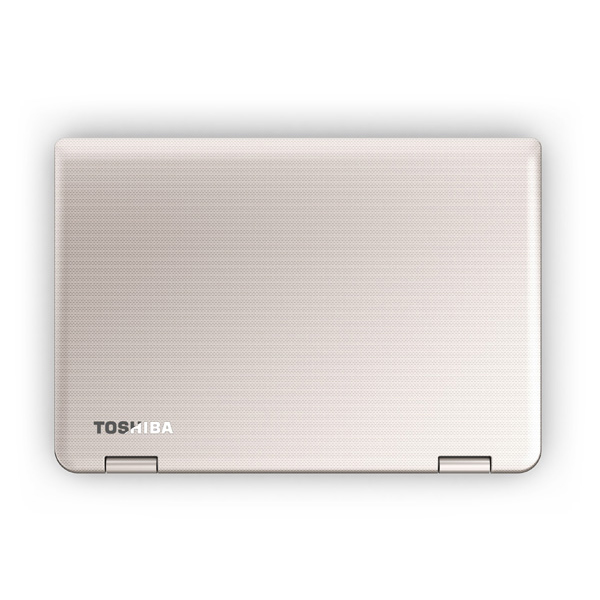Toshiba Satellite Radius 11 L15W-B1302
Specifications
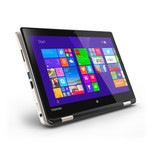
Price comparison
Average of 1 scores (from 1 reviews)
Reviews for the Toshiba Satellite Radius 11 L15W-B1302
Source: PC Mag
 Archive.org version
Archive.org versionLooking at the performance, the Toshiba Satellite Radius 11 (L15W-B1302) isn't particularly impressive, yet it still may be the best of the entry-level convertible-hybrid systems we've seen. It certainly leads the growing crowd of dual-hinge convertibles, though the Editors' Choice Asus Transformer Book T100TA, offers a better overall package, most notably in terms of battery life. At this price point, however, I'm strongly inclined to recommend a Chromebook over the majority of budget-friendly Windows systems, as the Chrome OS offers a better performance when paired with low-power processors.
Single Review, online available, Very Short, Date: 11/24/2014
Rating: Total score: 70%
Comment
Series: Like other 2-in-1 designs, the Radius 11 offers both laptop and tablet functionality. Instead of a detachable docking tablet, the laptop hinge allows the screen to be folded back into other positions. The modes include laptop, tablet, tabletop (folded flat), presentation (propped up like a tent), and audience (touchscreen shown with keyboard folded back as a base). When closed, the Radius 11 measures 2.18 x 28.96 x 19.81 cm (0.86 x 11.4 x 7.8 inch) and weighs 1.32 kg (2.9 pound). The Radius 11 is a budget laptop that comes with a 11.6 inch touchscreen. The 1366 x 768 resolution display is reasonably bright and clear. The laptop keyboard has a basic chiclet-style design, with black square keys but no backlight, so using the keyboard in a dimly lit environment might be troublesome. It features all the keys you would normally expect to find on a notebook, but many have been shrunk to fit its small frame.
When the display is folded back, the keyboard is automatically disabled, and automatic screen rotation is turned on. The Satellite Radius 11 is powered by an Intel Celeron processor, a budget dual-core design designed for low end consumer laptops, coupled with 4 GB of RAM. It's functional, but noticeably slow, even when performing very basic tasks, like opening a new browser tab. It will do for things as simple as typing or checking email and Facebook, streaming videos. However, most other tasks will be a bit sluggish. Storage comes in the form of a 500 GB hard disk. Ports and connectors are limited, but no more so than many ultraportable-class laptops today. Two USB ports are included, USB 3.0 on the left side and USB 2.0 on the right side. There's an HDMI output for connecting a monitor, TV or projector, and an SDXC slot for memory cards. A single 3.5 mm headset jack allows connection of earphones with mic for video chats. In addition, it also features a webcam, Bluetooth 4.0, and built in stereo speakers.
Intel HD Graphics (Bay Trail):
Integrated GPU for tablet and notebook Bay Trail SoCs. Based on the Ivy Bridge GPU with four Execution Units and support for DirectX 11.
Only some 3D games with very low demands are playable with these cards.
» Further information can be found in our Comparison of Mobile Graphics Cards and the corresponding Benchmark List.
N2840: Soc with an integrated dual core Atom processor clocked at up to 2.58 GHz and an Intel HD Graphics GPU.» Further information can be found in our Comparison of Mobile Processsors.












